When I first heard about Cala Goloritzé, I could tell it wasn’t just another pretty spot along Sardinia’s coast. This hidden gem on the island’s eastern shore promised unbelievably clear turquoise water and dramatic limestone cliffs.
Every drop of sweat on the trail felt like a small price to pay for a place like this. Sardinia’s most spectacular beaches usually demand some effort, which keeps them pristine and way less crowded than the easy-access spots that draw summer tourists.
I started the hike at the Supramonte plateau near Baunei. The trail wound through Mediterranean scrubland, full of juniper trees and wild herbs.
My backpack got heavier with every step. Fellow hikers kept telling me the view at the end would make me forget the tough trail.
Sardinia just nails that blend of hiking and beach life—honestly, I haven’t found that mix anywhere else in Italy.
I’ve hit beaches all over Europe, but this one felt different. Working for the reward made it sweeter.
Most visitors stick to the popular resorts and totally miss the island’s real magic, hidden along rugged hiking trails.
The anticipation built as I tackled the final stretch. I heard the gentle waves before the breathtaking cove finally appeared.
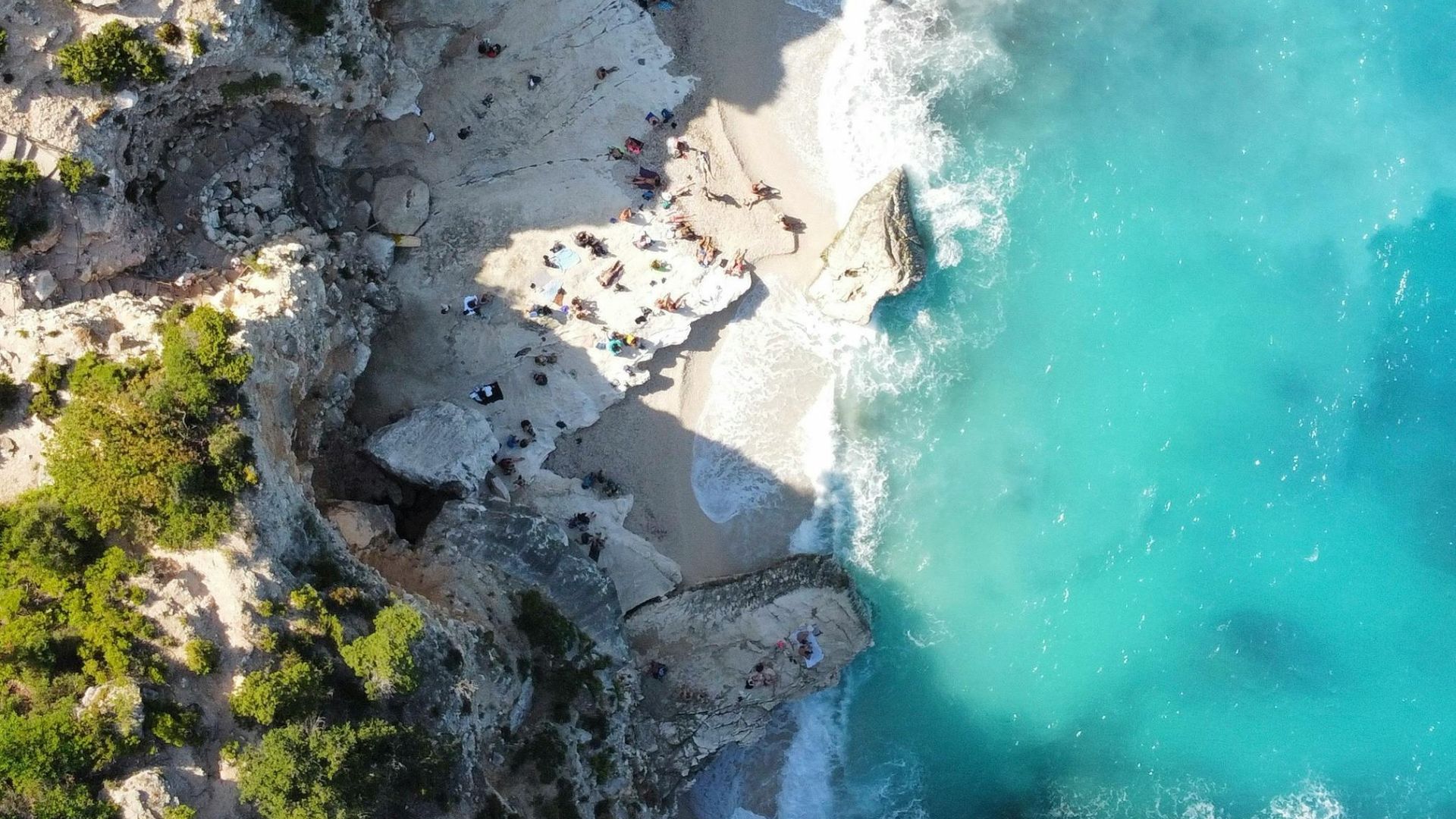
What Makes Sardinia’s Beaches Unmissable
Sardinia’s beaches just stand out from others I’ve seen in the Mediterranean. There’s a mix of natural drama and pristine beauty here that’s tough to find anywhere else in Europe.
Mediterranean Scenery And Natural Beauty
The coastal landscapes in Sardinia are honestly breathtaking. The contrast between the deep blue sea and rugged coastline creates new, picture-perfect views around every corner.
Mediterranean scrub clings to the hillsides, filling the air with the scent of wild herbs and flowers.
The beauty goes way beyond the beaches themselves. Hiking paths wind through fragrant macchia mediterranea (that’s Mediterranean scrub), and they give you some wild viewpoints over hidden coves.
These beaches feel special because so many of them remain untouched. Sardinia’s managed to keep its natural coastline mostly intact.
A lot of the best beaches require some effort to reach, which helps protect them from overdevelopment.
The island’s diverse microclimates mean you’ll find dramatically different coastal environments just a few miles apart.
You might stumble onto a windswept beach with rolling dunes, and then, not far away, a sheltered cove tucked between massive cliffs.
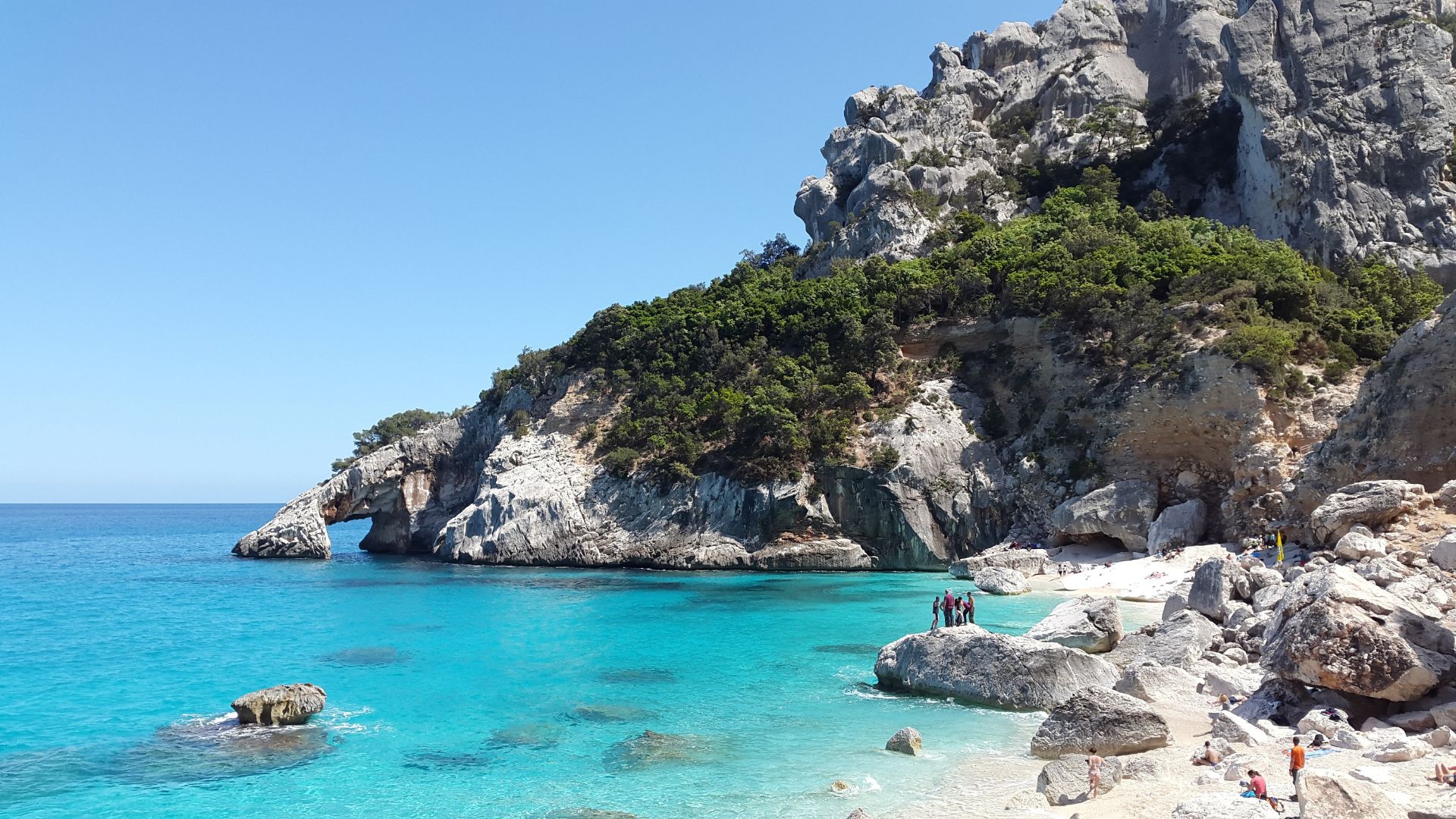
Unique Qualities Of Sandy Beaches
The sand here varies a lot. I’ve walked on powdery white sand that honestly rivals the Caribbean, and I’ve seen pink sand made from crushed coral and shells.
Some beaches, especially up north, have sand that squeaks under your feet. It sounds odd, but it’s actually a sign of super pure, silica-rich sand.
What really sets Sardinian beaches apart is the sheer variety. From famous La Pelosa and its shallow turquoise waters to the wild, untamed stretches on the west coast, there’s something for everyone.
The hidden coves, only reachable by boat or hiking, are the most impressive. Even in peak summer, these places feel tranquil and secluded.
The beaches rarely get overcrowded. Even in July and August, I’ve found plenty of space to spread my towel and just relax.
Limestone Cliffs And Dunes
Sardinia’s limestone cliffs create some seriously dramatic backdrops. At Cala Goloritzé, a limestone pinnacle towers over the beach—probably one of the most photographed coastal scenes in Italy.
These limestone formations do more than look pretty. They create sheltered swimming spots and protect beaches from the wind, plus offer natural shade on hot days.
Elsewhere, golden sand dunes stretch inland. These fragile ecosystems are home to unique plants that have learned to thrive with salt, wind, and little water.
The island’s geology throws up some wild coastal features:
- Deep sea caves you can swim into
- Natural stone arches jutting into the sea
- Isolated rock formations standing guard offshore
Hiking along these cliffs gives you some unforgettable views. Bring good shoes—trust me, the effort pays off.
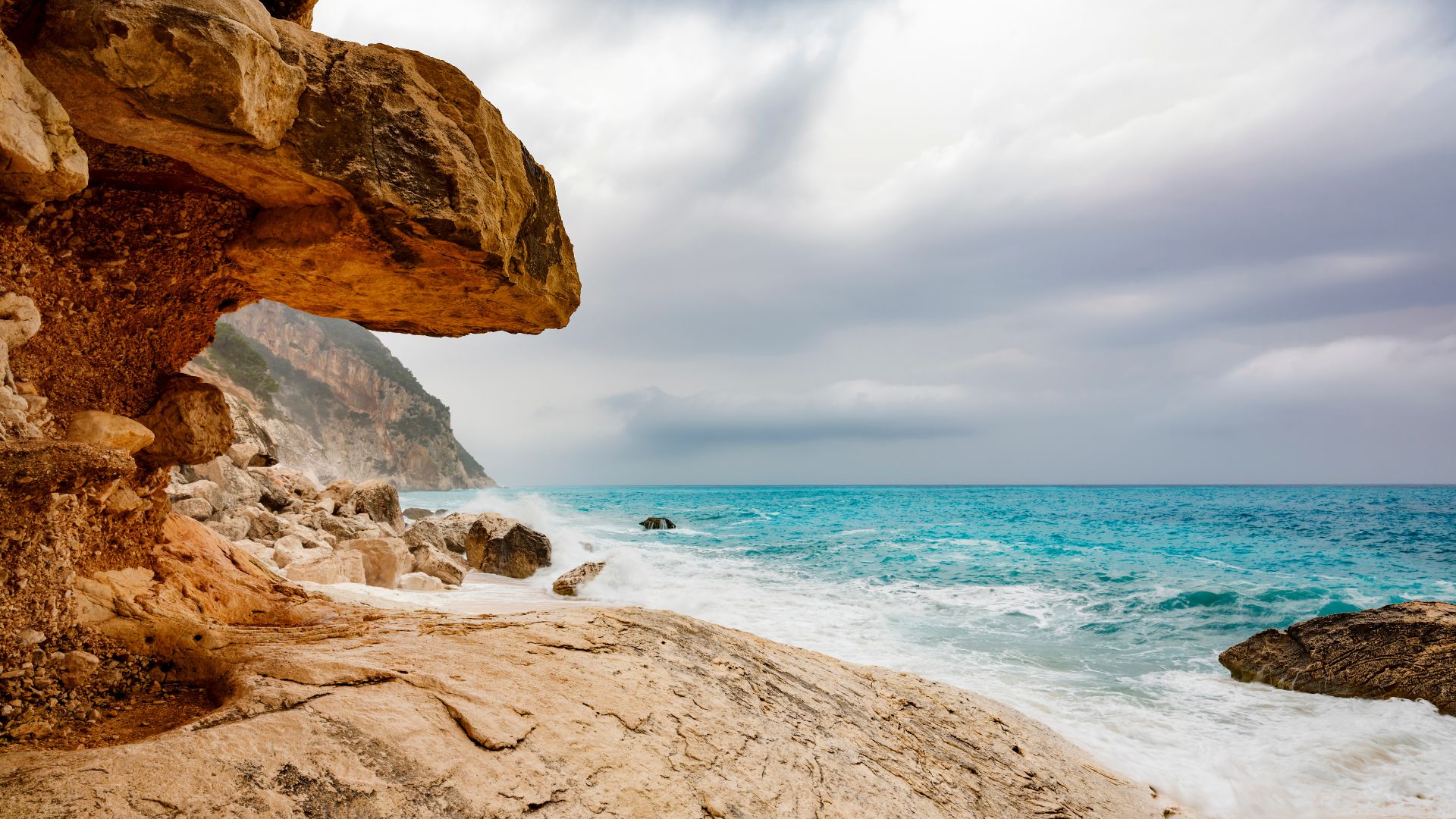
Crystal Clear Waters And Snorkeling
Sardinia’s waters are just ridiculously clear. I could see straight down 15-20 feet in some places, even without a mask. That’s mostly because there are no big rivers dumping sediment into the sea.
Snorkeling here opens up a vibrant underwater world.
Fish dart around the rocks near shore. Meadows of Neptune grass (a protected seagrass) create homes for all kinds of marine life.
The coastline gives you different snorkeling vibes:
- Rocky coves where octopus hide in crevices
- Sandy areas where stingrays sometimes glide by
- Deep blue spots where bigger fish cruise past
From June through October, the water’s perfect for swimming. Even in May and November, you’ll find brave souls in the sea on sunny days.
There aren’t tides to worry about, but always keep an eye on the flag system for weather. Many beaches slope gently into the water, so families and less confident swimmers can relax.
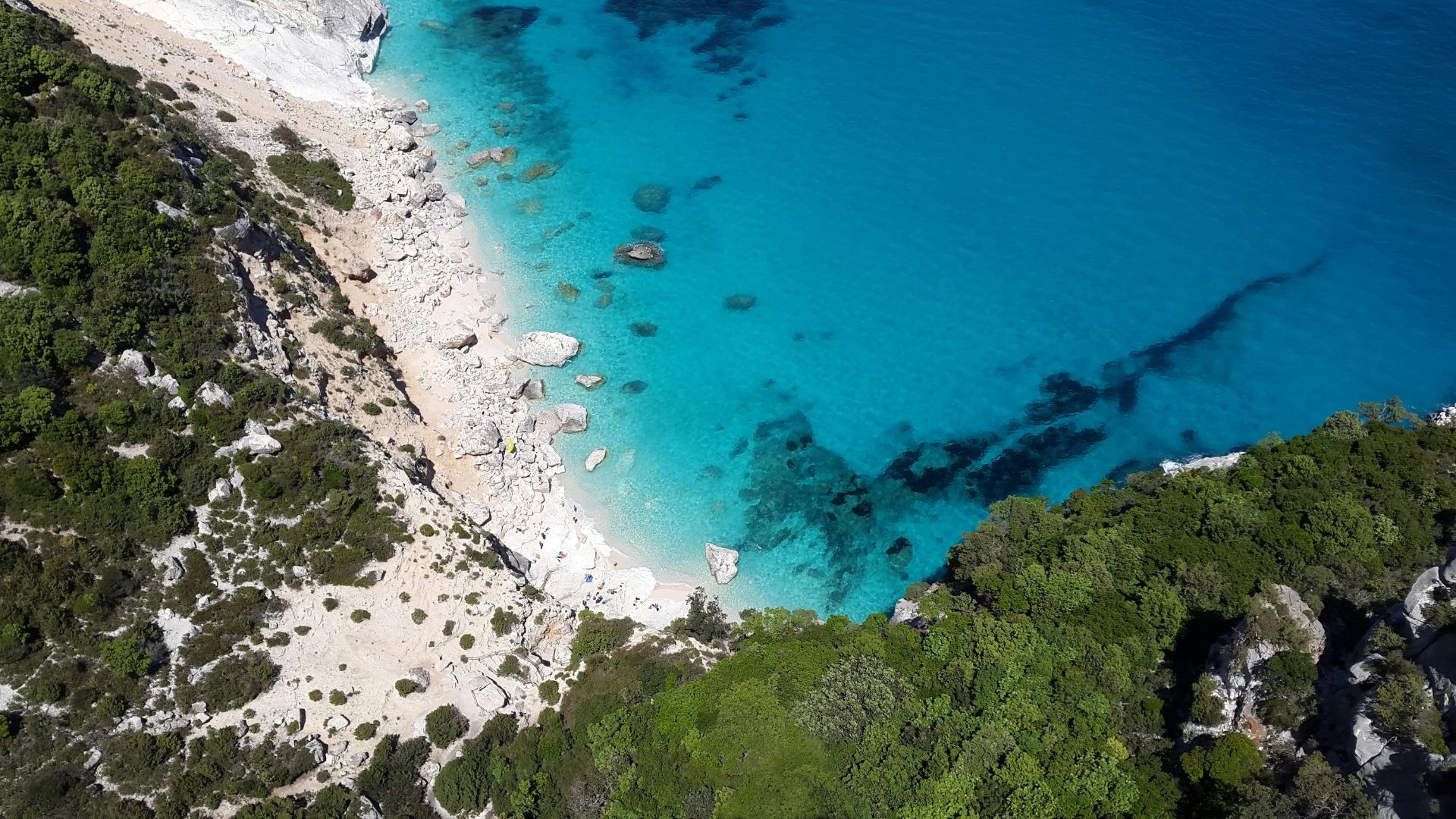
The Journey: Hiking Two Hours To Reach Paradise
The trail to Cala Goloritzé challenged me, but wow, was it worth it. The winding path shows off some of Sardinia’s best scenery before you finally reach what might just be the Mediterranean’s perfect beach.
Starting Point: Discovering Golgo And Cala Gonone
I kicked off my adventure at the Golgo plateau, about 10 miles from Baunei. This remote highland is the gateway to many of eastern Sardinia’s hidden beaches.
The trailhead is easy to spot but feels wonderfully isolated.
Cala Gonone, a bit further north, makes another great starting point for hikers. I stayed there the night before, soaking up the laid-back village atmosphere and getting ready for the trek.
Unlike the packed tourist areas, these spots keep their Sardinian character. Local shepherds still tend their flocks in the hills, and a morning espresso at a tiny café gives hikers the perfect send-off.
Even the drive to the trailhead is an adventure. Winding mountain roads offer glimpses of the turquoise sea far below.
Walking Through Wild Mediterranean Scrub
The trail throws you right into Sardinia’s unique landscape. Wild rosemary, juniper, and myrtle fill the air with their scent as you walk.
I kept stopping just to breathe it all in.
The path switches between rocky stretches and thick macchia, that Mediterranean scrubland that’s everywhere here. Yellow broom flowers and purple thistles pop up along the way.
About halfway, the trail opens up and you get these jaw-dropping panoramic views of the coast. The clash between rugged limestone cliffs and deep blue sea is something else.
Old wild olive trees, some hundreds of years old, give occasional shade. Their twisted trunks look like they’ve been through a lot.
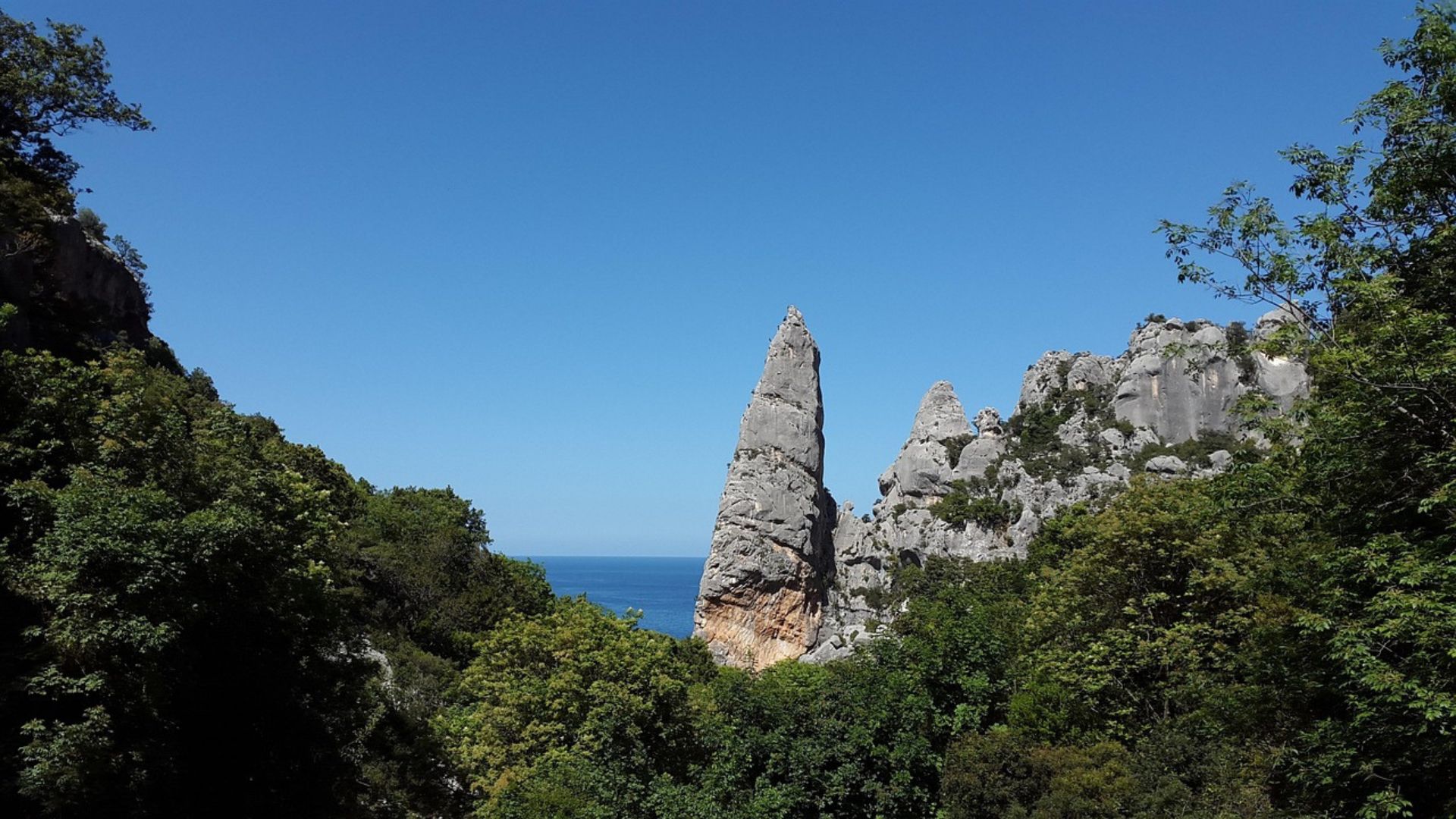
Planning For The Hike: Tips And Preparation
Essential Gear:
- Sturdy hiking shoes (seriously, don’t try this in flip-flops)
- At least 2 liters of water per person
- Sun protection—hat, sunscreen, sunglasses
- Some snacks and a lunch
- Swimming stuff for when you arrive
The hike takes about 1.5-2 hours and you’ll want a moderate level of fitness. I started early, around 8 AM, to avoid the midday heat and crowds.
That also gave me extra beach time before heading back up.
Cell service is spotty, so I downloaded offline maps in advance. The trail is usually well-marked with red and white paint on rocks.
Pack light but smart. I brought too much food (regretted it) but was really glad I had extra water for the uphill return.
Best Time For The Hike: Seasons And Weather
May and June are perfect. Temps hover between 70-80°F, wildflowers are everywhere, and the summer crowds haven’t arrived yet.
That’s when I went, and honestly, it felt magical.
September is also great—warm water for swimming, cooler air for hiking. The Mediterranean’s at its warmest after summer, so beach time feels like a real reward after your trek.
July and August? It gets hot, often over 90°F. If you go then, start super early and bring extra water. The beach will be busier too.
Winter hiking (November through March) can work, but the weather’s unpredictable. Sudden rain can make the trail slippery and a bit risky. On good days, though, you might have paradise all to yourself.
Cala Goloritzé: Sardinia’s Most Spectacular Beach
Cala Goloritzé sits tucked along Sardinia’s eastern coast, showing off limestone formations and that unreal turquoise water. It’s earned its spot as one of Italy’s most beautiful destinations, no question.
Cala Mariolu And Cala Luna: Nearby Hidden Gems
While hiking to Cala Goloritzé, I realized there are two other stunning beaches close by. Cala Mariolu totally stole my heart with its small white pebbles and turquoise waters that rival Goloritzé’s.
It’s a bit easier to reach than Goloritzé but still gives you that sense of discovery. The beach gets its name from the monk seal that used to live around here.
A little further north, Cala Luna offers a different vibe with its bigger sandy shore and some wild caves. I spent an afternoon checking out the massive limestone caves lining the beach.
You can reach both beaches by boat tours from Cala Gonone, which I found way more convenient than hiking to each one. Boats stop 200 meters from shore to help protect these places.

Shallow Waters And SUP Adventures
The waters at Cala Goloritzé are super shallow near the shore, making them perfect for stand-up paddleboarding (SUP). I rented a board from a nearby town and paddled along the coastline.
The water’s clarity is honestly mind-blowing—I could see straight to the bottom, even 15 feet down. Little fish zipped around under my board as I glided along.
The mornings were calm, so paddling was easy. Winds picked up a bit in the afternoon, though, so I’d say get there early for the best SUP session.
One thing: the pebbly beach can be rough on bare feet. Water shoes saved me. The small rocks stretch into the water for a few feet, then you hit soft sand.
Diving Into The Blue: Swimming Experiences
Swimming at Cala Goloritzé turned out to be the highlight of my Sardinian trip. The water felt perfect in late May—refreshing, but not freezing.
Snorkeling here was unforgettable. I spotted colorful fish, sea urchins, and even a couple of tiny octopuses hiding in the rocks.
A unique freshwater spring creates cold currents in spots. I didn’t expect it, but it felt great on a hot day.
The most magical moment? Swimming toward the famous 143-meter limestone pinnacle called “Aguglia” that towers over the beach. Looking up at that from the water was just surreal.
Boats have to anchor 200 meters offshore to protect the beach, so if you arrive by sea, be ready for a short swim in.
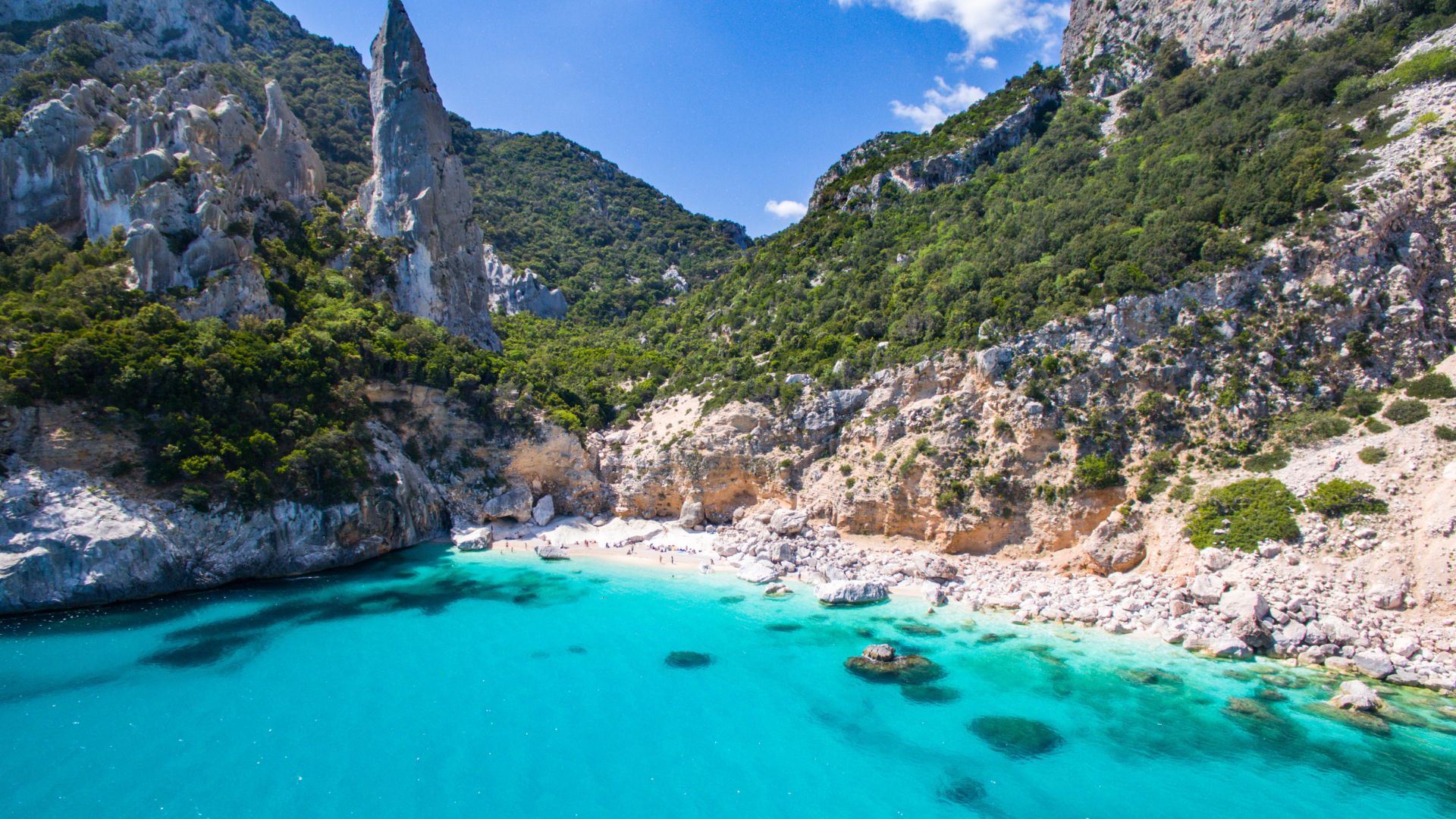
Discovering More Secret Beaches In Sardinia
Sardinia’s coastline hides so many hidden treasures beyond the famous postcard spots. On my trip, I found a handful of secluded beaches that rivaled my two-hour hike but had their own unique charm.
Costa Smeralda And Spiaggia Del Principe
Costa Smeralda is famous for its emerald waters and exclusive vibe, but honestly, a lot of travelers miss its secret spots. I stumbled onto Spiaggia del Principe, named after the Aga Khan, who fell in love with this perfect crescent of sand.
The beach sits in a protected cove where the water shifts from turquoise to deep blue.
What makes this place really special are the granite formations that form natural swimming pools near the shore. You’ll need to walk a bit through Mediterranean scrub, which keeps the crowds down even in high season.
Early morning is the best time to visit—the light on the water is unreal. Bring your own water and snacks, since there aren’t any facilities right on this pristine beach.
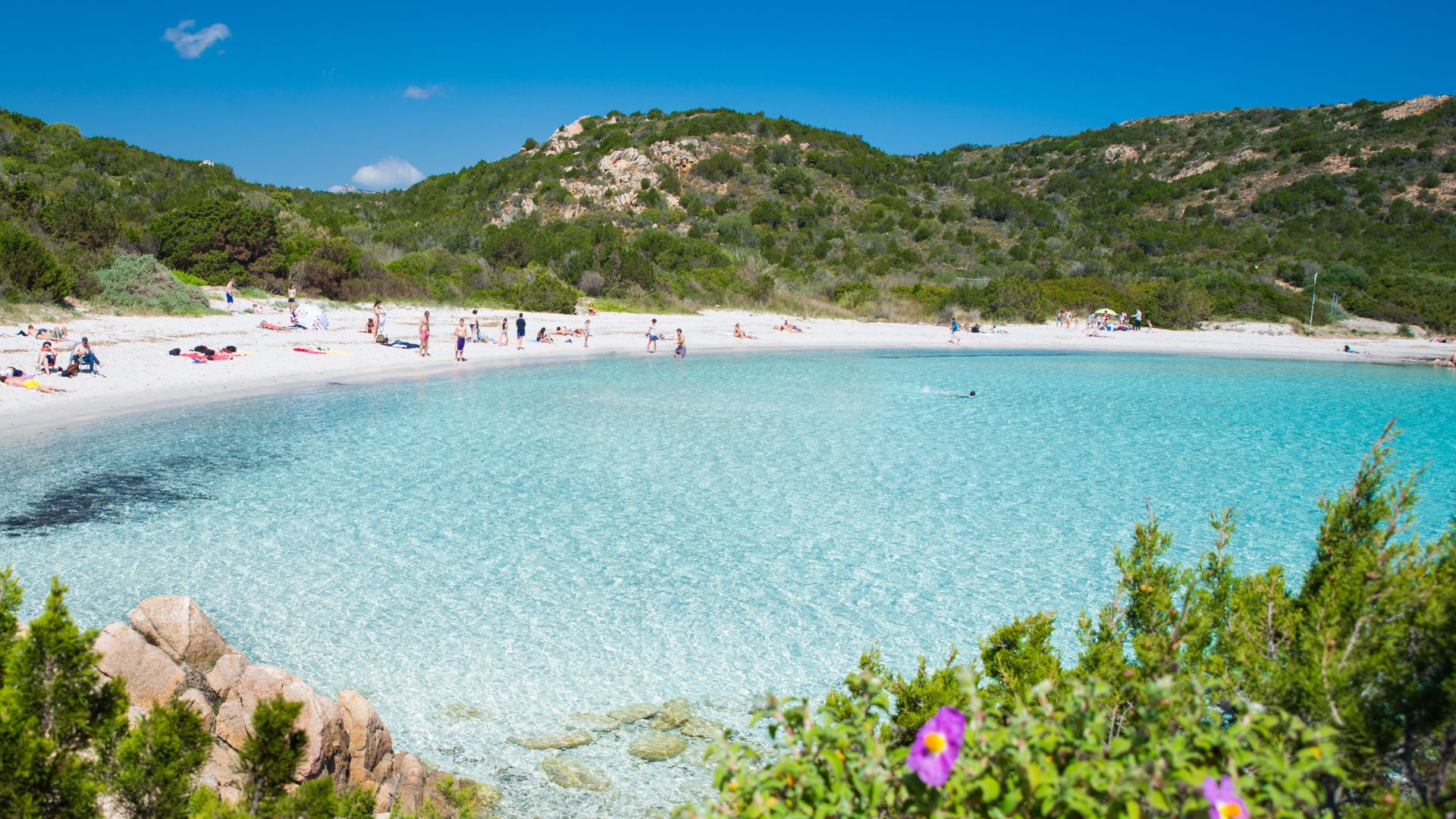
La Maddalena Archipelago Marvels
La Maddalena’s island cluster holds some of my most treasured Sardinian discoveries. I took a small boat from Palau and found secluded coves you just can’t reach by car.
Cala Coticcio, which locals call “Tahiti,” really does feel exotic. The sand feels powdery, and the water is so clear I could count fish swimming right beneath me.
You can only admire Budelli’s pink beach (Spiaggia Rosa) from afar these days for conservation reasons. Luckily, Cala Corsara nearby offers similar jaw-dropping beauty, with its strange and wonderful rock shapes.
I hopped between Spargi, Razzoli, and Santa Maria and stumbled on hidden beaches where, sometimes, I had the whole cove to myself. Since the archipelago keeps strict protections, developers have left these beaches untouched.

Cala Brandinchi, Tuerredda Beach, And Berchida
Cala Brandinchi has truly earned its “Little Tahiti” nickname. The shallow, crystal-clear water stretches far from shore, making it a dream for wading.
Pine trees line the edge, giving natural shade just steps from the sea.
Tuerredda Beach in the south instantly won me over. Its perfect half-moon bay and that little island you can swim to—what more could you want?
You’ll find both serviced areas with umbrellas and wilder stretches if you want a bit more space.
Berchida, probably my top find, runs nearly a mile long. Juniper trees frame the sand dunes, and there’s not a single permanent building in sight.
On the eastern coast, Berchida treats early risers to incredible sunrises.
Each of these beaches brings something different: Brandinchi’s Caribbean-like shallows, Tuerredda’s sheltered bay, and Berchida’s untamed vibe. Honestly, I’d give each at least a full day if you can.
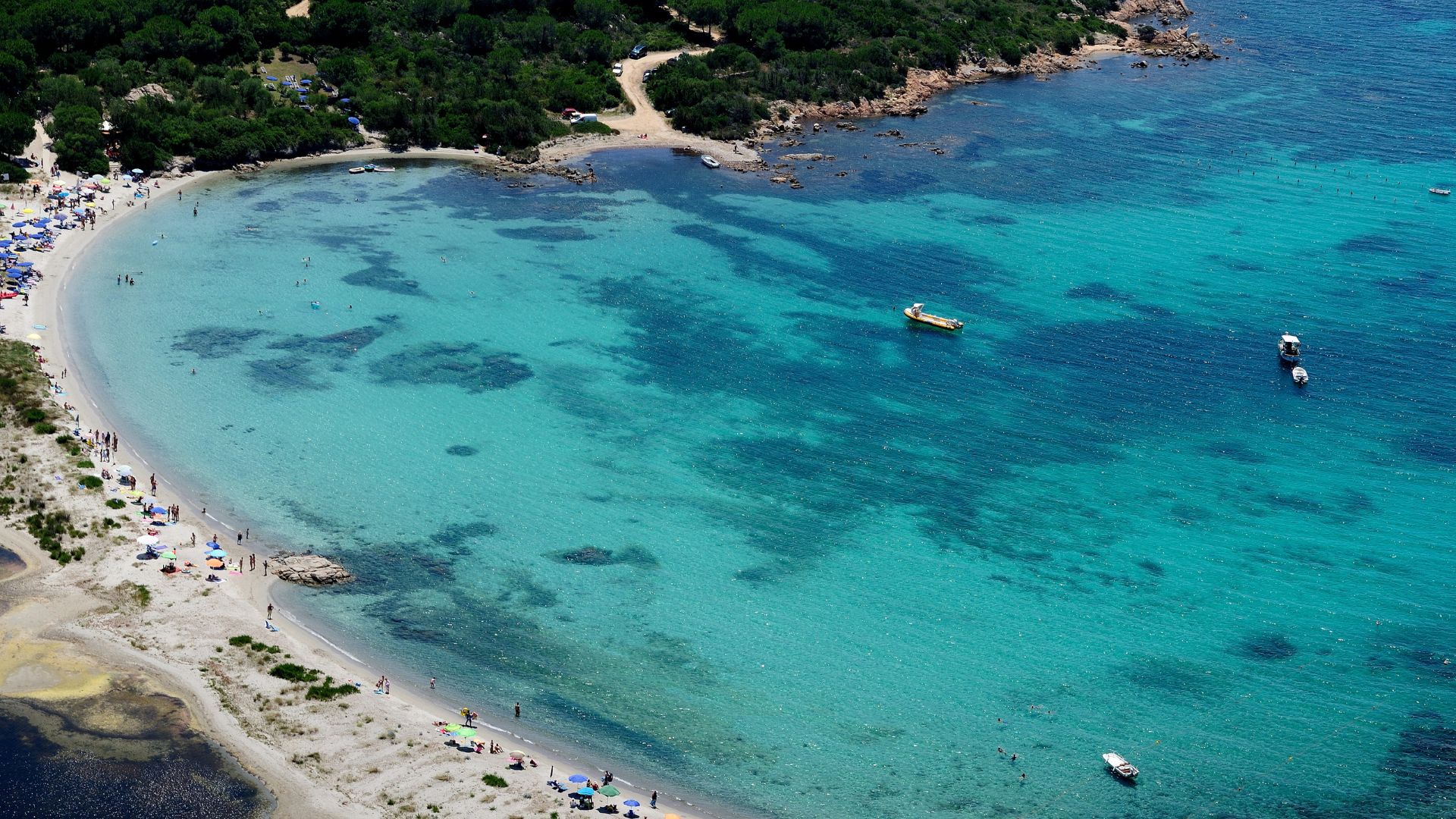
Planning The Perfect Sardinia Adventure
Sardinia packs in so much variety for travelers who look beyond the obvious. I’ve learned that planning ahead really helps when you want to find hidden gems and get a taste of real local life.
Where To Stay: Pula, Alghero, Gallura, And More
Pula turned out to be a fantastic base in the south. It’s close to beautiful beaches and only about half an hour from Cagliari’s old center.
The town’s piazzas feel lively and the restaurants are excellent, but prices aren’t as wild as in the more touristy places.
Alghero instantly charmed me with its Catalan touches and a walkable old town wrapped in ancient walls. Watching the sun set over the Mediterranean there? Unforgettable.
It’s also a great spot for exploring the rugged west coast.
If you’re after a bit of luxury, Gallura in the northeast really delivers. The fancy resorts and proximity to Costa Smeralda make it popular, but I loved the granite rocks and turquoise water most of all.
Bari Sardo, on the east coast, surprised me with its authenticity and lack of crowds. Its long beaches and mountain backdrop made it feel both relaxing and adventurous.
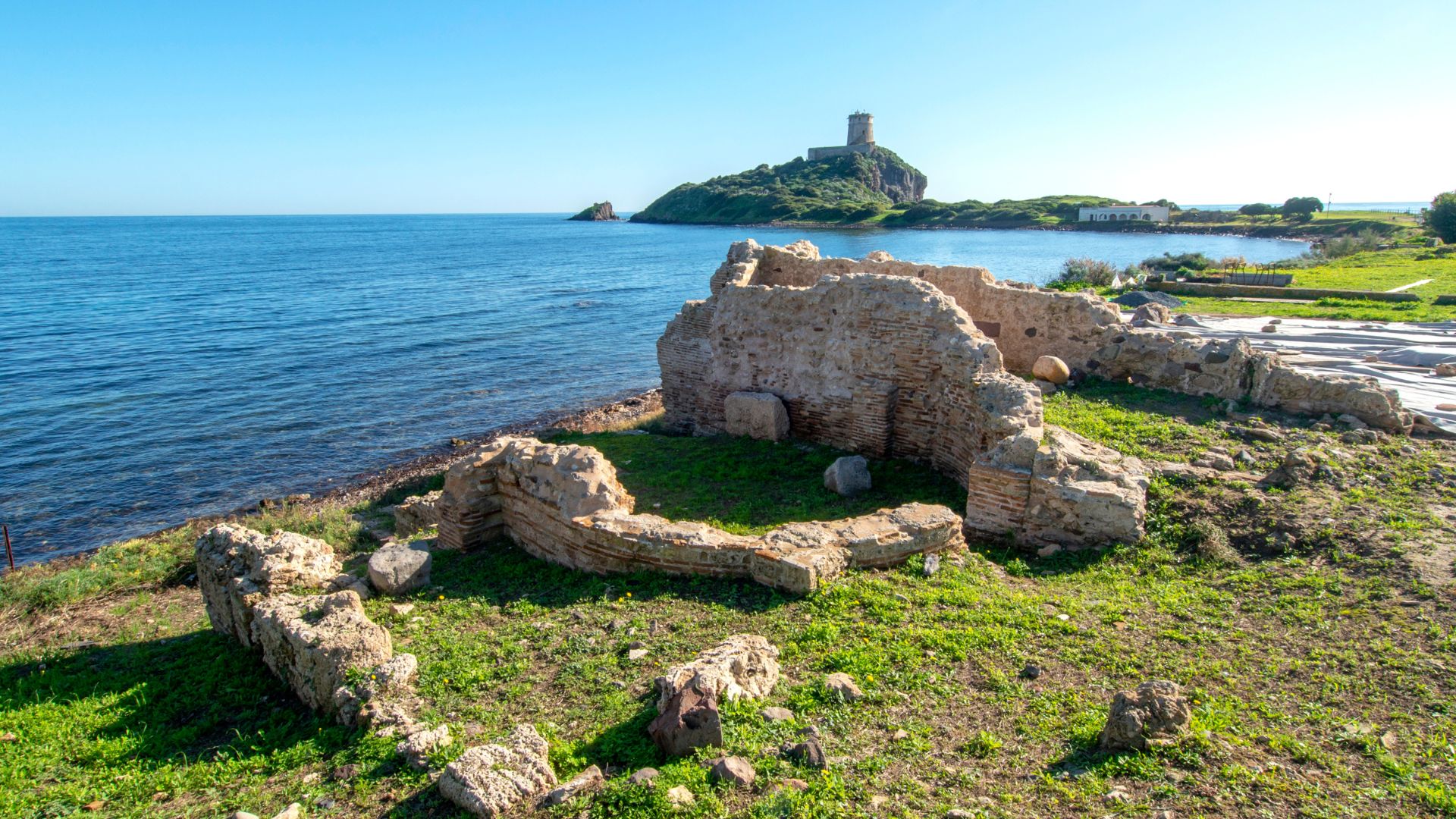
Sampling Local Restaurants And Food
Sardinian food caught me off guard with flavors you just don’t find elsewhere in Italy. I always seek out agriturismi (farm restaurants) for the most genuine meals.
One of my best feasts happened just outside Cagliari—so many courses, all local specialties.
You really have to try:
- Culurgiones: Little potato and cheese dumplings
- Fregola con arselle: Small pasta balls with clams
- Porceddu: Spit-roasted suckling pig, usually for special occasions
- Seadas: Cheese pastries with honey on top
If you love wine, don’t skip Cannonau. Locals say this robust red helps them live longer, and I never leave without a bottle for home.
Along the coast, look for family-run spots where the seafood comes straight from the water. In Alghero, I ate fish that had probably been swimming that same morning.



Travel Tips For Exploring Beyond The Beaches
You really need a car to find Sardinia’s lesser-known treasures. Public transport does exist, but it just doesn’t get you to the best places.
I always book my rental early, especially in summer.
If you want to hike, bring the right gear. Some of my favorite days were spent on trails near Bari Sardo that led to beaches you can’t drive to.
Shoulder seasons (May-June or September-October) are the sweet spot for weather and smaller crowds. I found June perfect—warm enough for swimming, but before the August rush.
Brush up on a few Italian phrases before you go. In touristy areas, you’ll get by with English, but in the villages, even basic Italian goes a long way.
Even my clumsy attempts at the language helped me connect with locals happy to share their island’s secrets.
Practical Travel Essentials For Visiting Sardinia’s Beaches
Packing smart for Sardinia’s beaches makes a big difference. After a few trips, I’ve realized that having the right gear saves headaches and lets you enjoy the island more.
Getting There: From USA To Sardinia
Flying from the USA to Sardinia isn’t direct, but trust me, it’s worth it. I usually land in Rome or Milan, then grab a connecting flight to Cagliari or Olbia.
In summer, flights fill up fast, so I book three or four months in advance.
Budget airlines like Ryanair and EasyJet connect from mainland Italy for a good price. If you’re up for a sea journey, ferries run from Civitavecchia (near Rome) to several Sardinian ports.
Jet lag is real—don’t forget to plan for it! I always take a day to recover before jumping into hikes or beach trips.
From the US East Coast, there’s a six-hour time difference; from the West Coast, it’s nine.
Exploring Ogliastra, Bonifacio, And Costa Rei
Ogliastra might just have Sardinia’s most secluded beaches, with dramatic limestone cliffs everywhere. I always rent a car for this eastern region since public transport barely covers it.
The hike to Cala Goloritzè is tough, but the crystal-clear water at the end is totally worth it.
Bonifacio is actually in Corsica, but you can take a day trip from northern Sardinia by ferry. The white cliffs and old citadel give a nice break from endless beach days.
Costa Rei, with seven kilometers of golden sand, is my go-to spot for chilling out. You don’t need to hike in, and the beauty still blows me away.
If you want Scoglio di Peppino to yourself, get there early in the morning before the crowds show up.
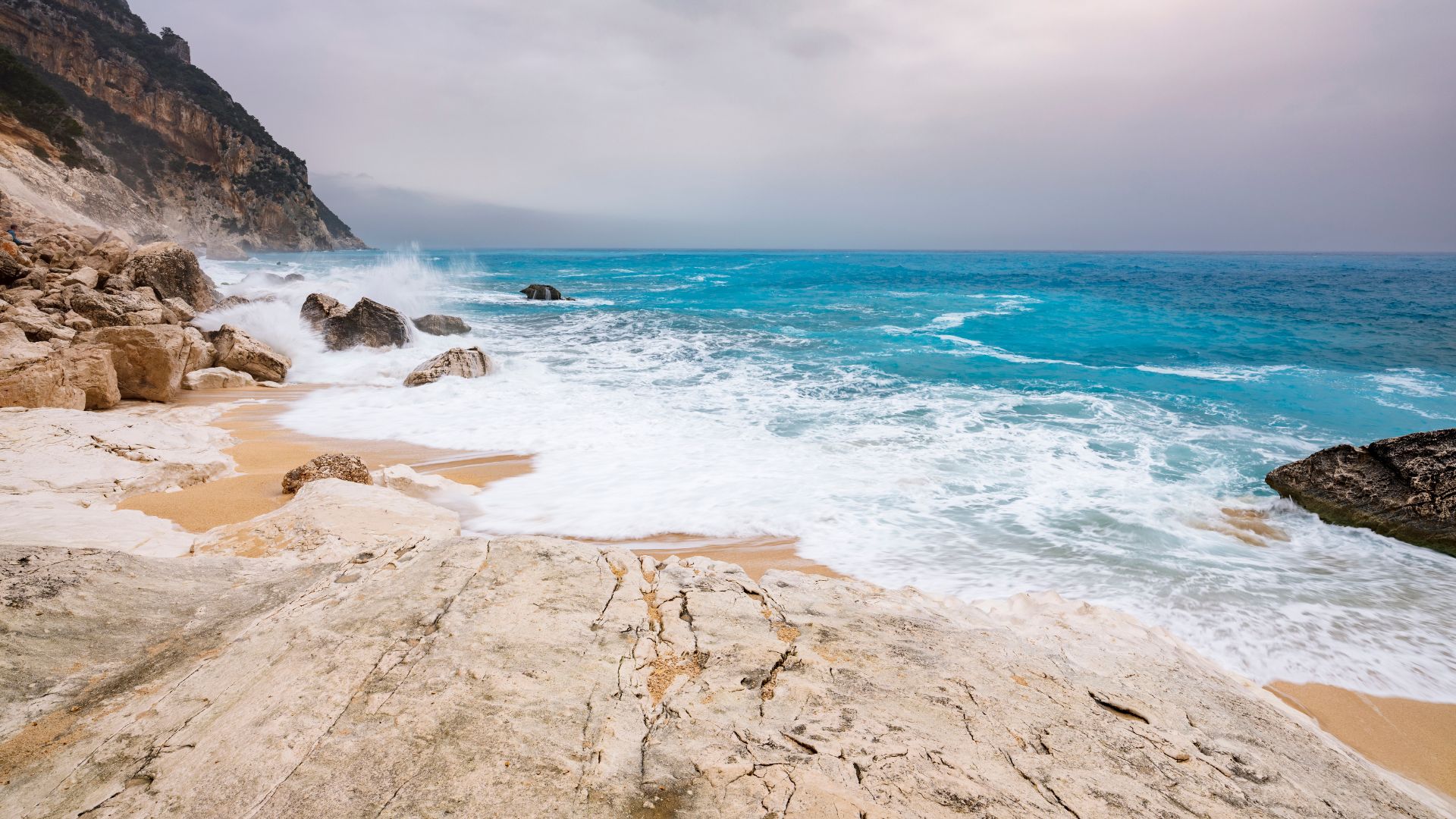
Responsible Tourism And Beach Preservation
Sardinia’s fragile coastal ecosystem really needs thoughtful visitors. I always toss a reusable water bottle in my bag because plastic pollution just keeps threatening marine life.
A lot of beaches now cap the number of daily visitors. It’s smart to check online ahead of time—you might need a permit.
The “Leave No Trace” idea? They actually enforce it here. I carry a little bag for my trash and, honestly, sometimes I end up picking up what others leave behind.
If you try to take sand or shells, you could get hit with a fine—sometimes as much as €3,000. That’s no joke.
Regular sunscreen hurts coral and marine life, so I switched to reef-safe stuff. Local conservation groups really appreciate it when visitors stick to marked paths during coastal hikes.
All these little things? They actually help keep these amazing beaches around for the next generation.
If you visit protected spots like Asinara National Park, guided tours do more than just show you around—they help conservation efforts and give you a real sense of Sardinia’s unique ecosystems.

